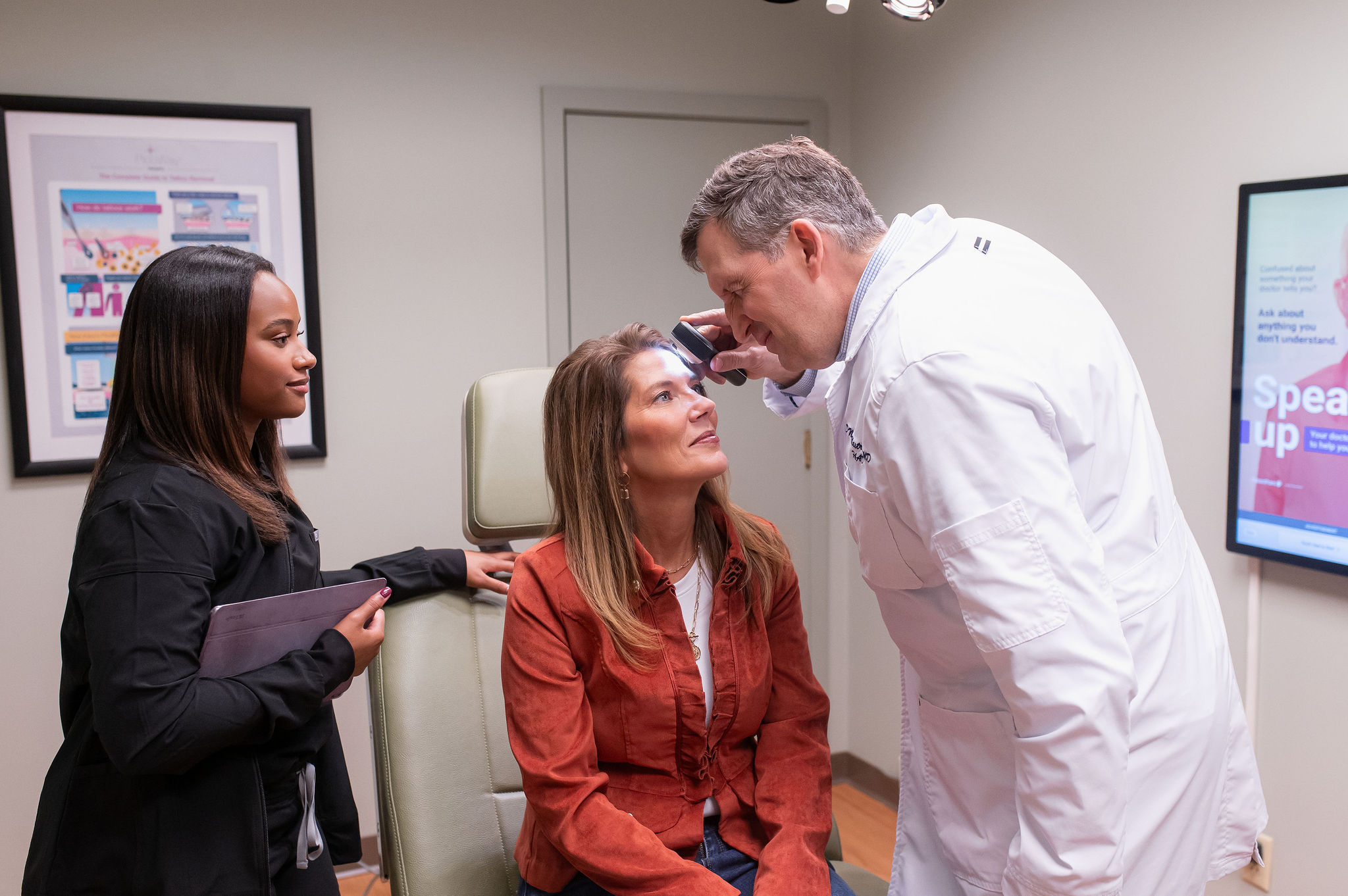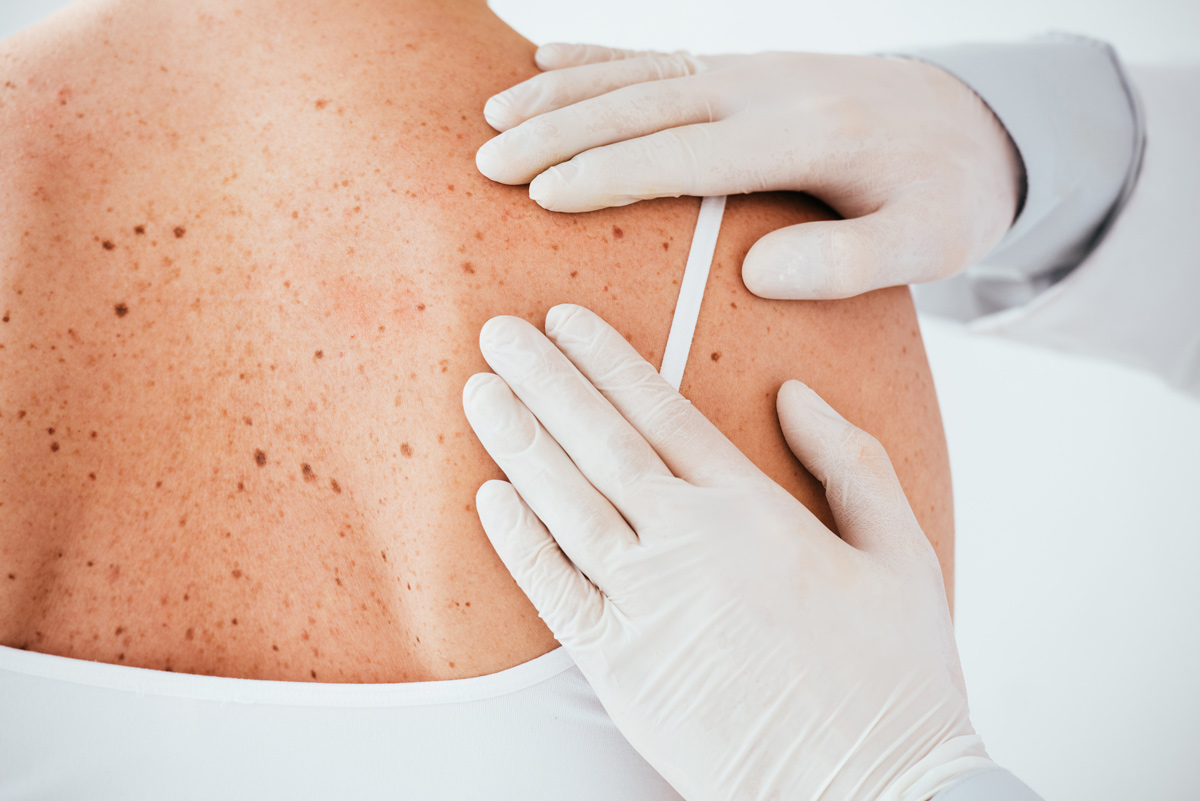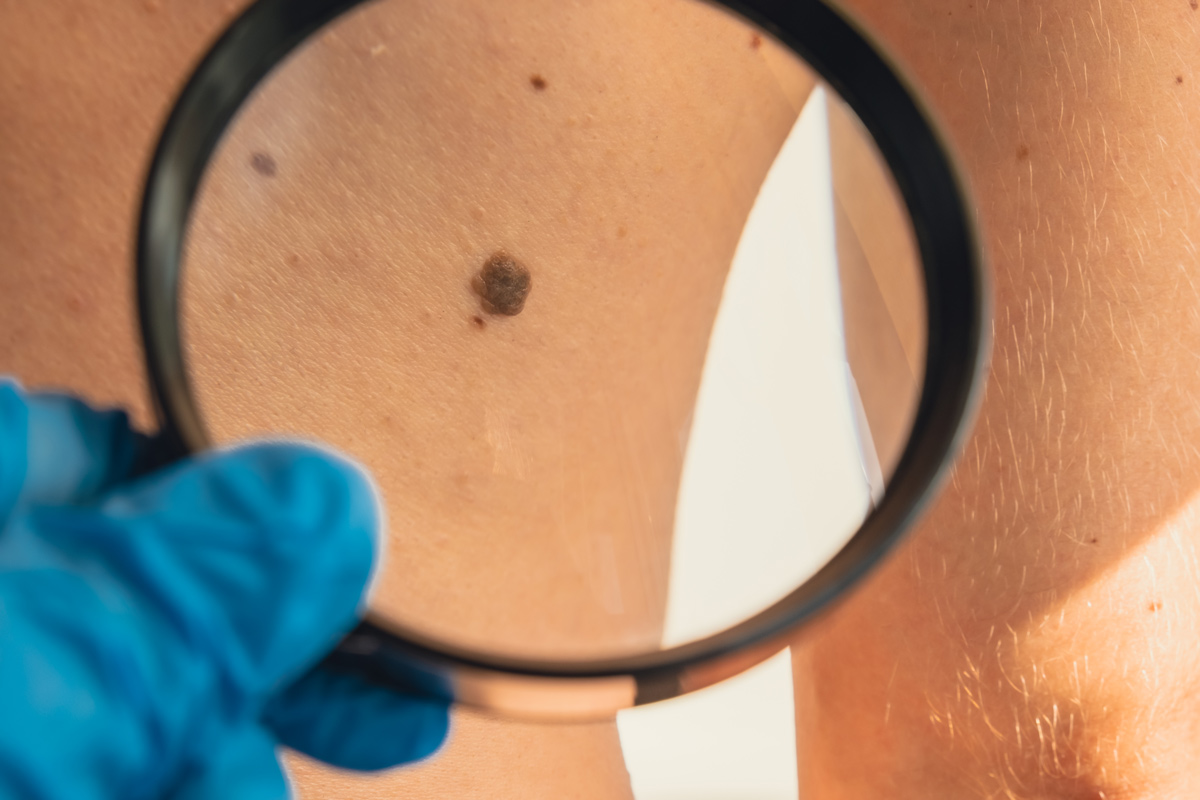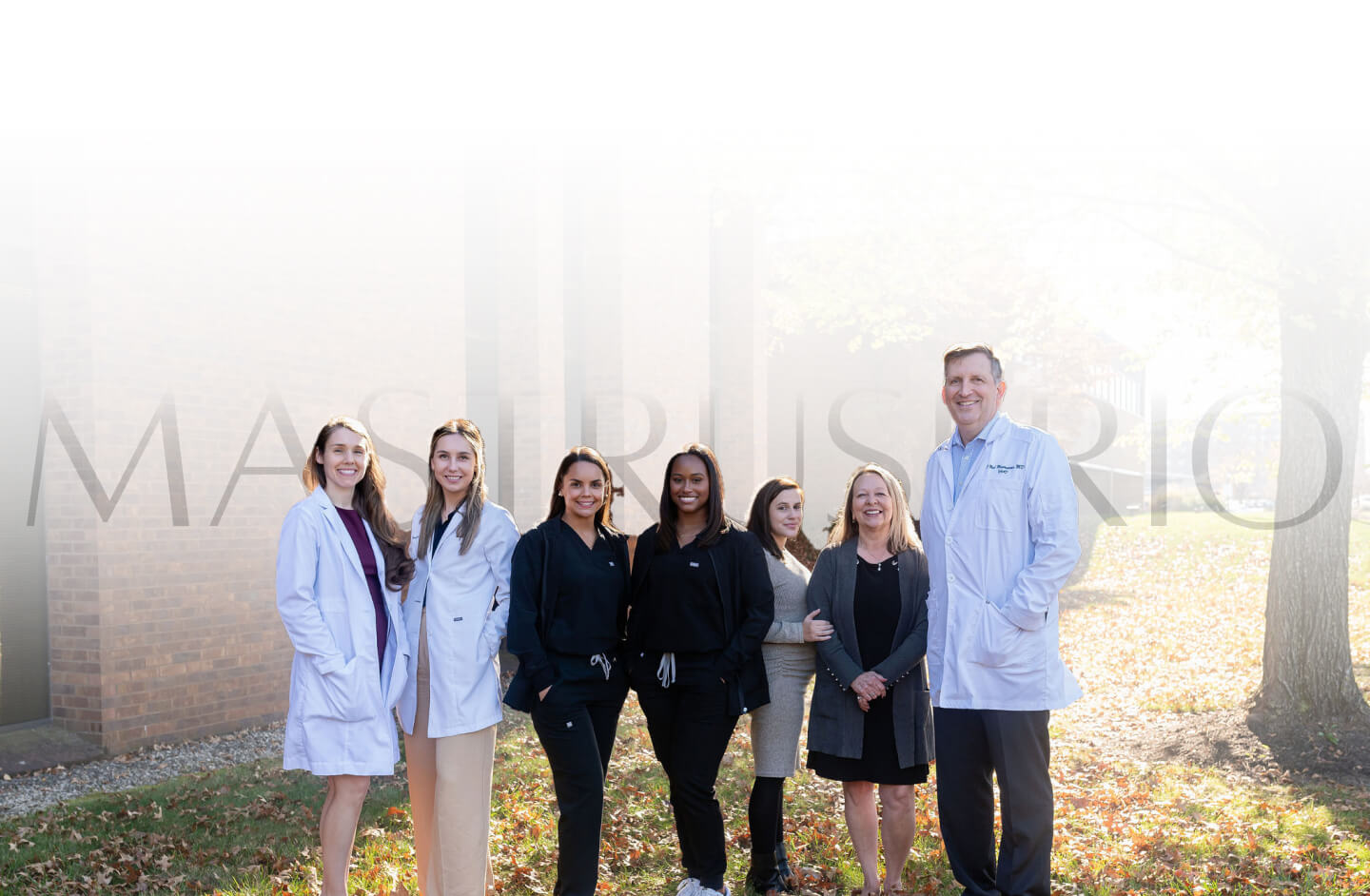
Thorough Examinations for Skin Cancer in Upper Arlington
Skin cancer is the most common form of cancer in the United States, but with early detection and proper care, it is highly treatable. At Dr. D. Neal Mastruserio Dermatology, we provide expert diagnosis, treatment, and prevention strategies for all types of skin cancer in Upper Arlington. Whether through surgical removal, topical solutions, or other therapies, we tailor our care to each patient’s unique situation. Our patient-centered approach ensures you receive the highest standard of care to protect your health.

Diagnosing Skin Cancer
Skin cancer occurs when abnormal skin cells grow uncontrollably, often as a result of prolonged exposure to ultraviolet (UV) radiation. It can develop anywhere on the body but is most common in areas frequently exposed to the sun, such as the face, neck, hands, and arms.
The three main types of skin cancer include:
The most common form, appearing as a pearly bump or flat, flesh-colored lesion.
Often seen as a red, scaly patch or a firm, raised bump, SCC is more likely to spread if untreated.
The most dangerous form of skin cancer, melanoma often appears as an irregular mole with changes in color, size, or shape.
The ABCDEs of melanoma refer to the key characteristics used to identify potential signs of melanoma, the most dangerous type of skin cancer. They are:
A – Asymmetry: One half of the mole or lesion does not match the other half.
B – Border: The borders are irregular, notched, or scalloped.
C – Color: The mole or lesion has multiple colors, such as brown, black, red, white, or blue.
D – Diameter: The mole or lesion is larger than 6 millimeters (about the size of a pencil eraser).
E – Evolving: The mole or lesion has changed in size, shape, color, or texture over time.
If you notice any of these ABCDE characteristics, it is important to consult with us for evaluation. Early detection and treatment of melanoma can significantly improve the chances of a positive outcome.


When to Visit a Dermatologist
Early detection is crucial for successful treatment. Be aware of some tell-tale warning signs, like new growths or sores that do not heal, changes in the size, color, or shape of moles, or lesions that itch, bleed, or crust over. If you have rough, scaly patches on the skin, get them checked out by a trusted medical dermatologist.
Expert Skin Cancer Care
At Dr. Mastruserio’s practice, we provide comprehensive care for skin cancer, encompassing everything from diagnosis to treatment and follow-up. Our approach begins with thorough skin exams, ensuring that any abnormalities are detected early.
Step 1: Comprehensive Skin Examination
Dr. Mastruserio begins with an examination, carefully inspecting any moles, spots, or lesions that appear unusual. He uses advanced tools and techniques to identify changes in skin texture, color, or size that may indicate potential skin cancer.
Step 2: Detailed Evaluation of Suspicious Areas
If any areas of concern are found, Dr. Mastruserio will take a closer look using dermoscopy, a non-invasive method that magnifies the skin to better evaluate suspicious lesions. This helps differentiate benign growths from those that may require further attention.
Step 3: Biopsy (If Needed)
If a lesion appears potentially cancerous, a biopsy may be performed to confirm the diagnosis. This involves removing a small sample of the affected tissue, which is then sent to a lab for analysis. The procedure is quick, with minimal discomfort.
Step 4: Personalized Discussion and Next Steps
After the evaluation, Dr. Mastruserio will discuss the findings with you. If treatment is necessary, he will explain the available options and recommend a personalized plan tailored to your specific diagnosis and skin health needs. Regular follow-up appointments may be recommended, especially if you have a history of skin cancer or other risk factors.

Actinic Keratosis Precancer
Actinic keratosis (AK) is a precancerous condition caused by sun damage. It often appears as rough, scaly patches or small crusty bumps on sun-exposed areas like the face, scalp, and hands.
While AK is not cancer, it has the potential to develop into squamous cell carcinoma if left untreated. Identifying and treating actinic keratosis early can prevent progression to skin cancer.

Treatment Options for Actinic Keratosis
Topical Medications
Creams or gels that target and eliminate abnormal cells.
Cryotherapy
Freezing off the lesion with liquid nitrogen.
Photodynamic Therapy (PDT)
A light-based treatment that destroys precancerous cells with minimal damage to surrounding tissue.

